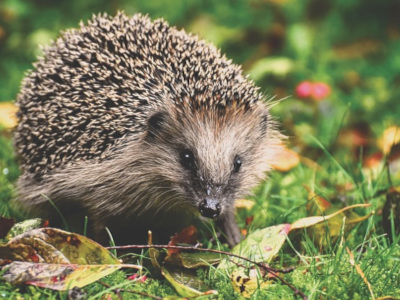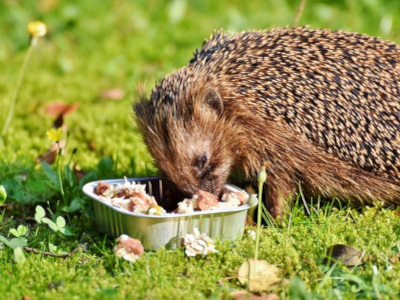The hedgehog got its name because of its unique way of finding food. These creatures dig through hedges and other plants on the ground to search for small animals that make up most of their diet. Hedgehogs are carnivores, and their diet consists mainly of insects, worms, centipedes, snails, mice, frogs, and snakes. While moving through the hedges, hedgehogs make pig-like grunts. This is why they are called hedgehogs.

Hedgehogs are only 20–25 cm long and typically weigh up to 1.2 kg. The back and sides of the hedgehog are covered in 25-mm-long spines, which are actually modified hairs. These spines are absent from the face, chest, belly, throat, and legs. These areas are covered with gray-brown fur. There are about 5000 to 7000 spines on an average adult hedgehog. The hedgehog also has a small tail.
There are 17 hedgehog species that are found in Europe, Africa, and Asia. They can live in many different habitats, including woodland, farmland, parks, and gardens. In addition, hedgehogs are also settled in urban habitats and can survive well in cities. As long as there is food and shelter available and the ability to connect with other hedgehogs, they could even make good use of cemeteries, railway land, wasteland, and both public and private gardens.
Many people find hedgehogs to be helpful pets because they eat many common pests found in gardens. When hunting, they rely on their hearing and sense of smell since their eyesight is not very strong. Furthermore, hedgehogs are good runners, as their speed can reach up to 9.5 km/h. They are also proficient climbers and are able to swim.
What many people do not know is that hedgehogs are lactose-intolerant. It was once believed that hedgehogs solely drank milk directly from cows’ udders. This may have contributed to why people often leave milk out for them. If you want to feed a hedgehog, you could leave out hedgehog food or wet cat food.

Defensive Adaptations and Hibernation
Hedgehogs are mammals with a unique coat of stiff, sharp spines. When threatened, they roll up into a spiky and unappealing ball, discouraging potential predators. They typically rest in this position during the day and become active at night to forage for food.
In colder regions, hedgehogs hibernate. In deserts, they undergo a similar process called aestivation to survive extreme heat and drought. However, in milder climates, they remain active throughout the year.

Reproduction
Solitary animals usually mate only for breeding. The offspring born each year, in litters ranging from one to eleven, stay with their mothers for a short period of four to seven weeks before heading out on their own. During this time, female hedgehogs must protect their young from predators, including male hedgehogs who may prey on them. In some cases, hedgehog mothers may eat their young if the nest is disturbed, but they may also relocate them to a different nest.
Unfortunately, many hedgehogs are unintentionally killed. Regardless of having a lifespan of 2–3 years, their lives are cut short. Hedgehogs often lose their lives on roads, to lawnmowers, strimmer’s, and garden chemicals. Moreover, the hedgehog is in serious decline. It is difficult to monitor hedgehog numbers accurately, but evidence indicates numbers could be down by over half in rural areas and a third in urban areas since 2000.
Sources:
https://www.nationalgeographic.com/animals/mammals/facts/hedgehog
https://www.wwf.org.uk/learn/fascinating-facts/hedgehogs
